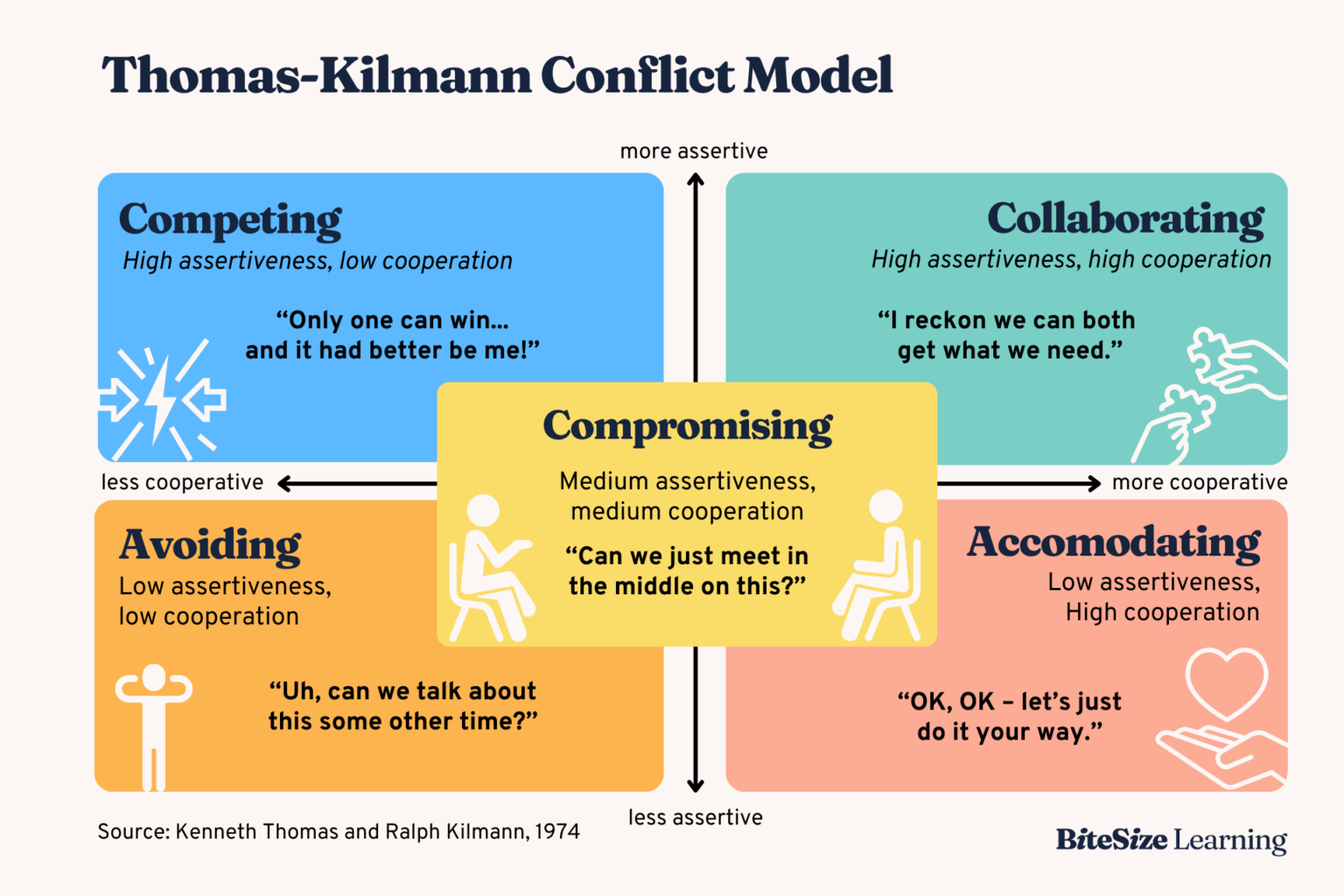As a leader, you have a responsibility to foster healthy conflict resolution and create a productive workplace. Effectively resolving disputes as they arise not only protects employee well-being—it also strengthens your organization’s financial health.
Conflict at work is inevitable. Whether it stems from miscommunication, competing priorities, or personality differences, tension in the workplace isn’t a sign of failure, it’s a sign that people care enough to engage. The real issue isn’t the presence of conflict; it’s how it’s handled.
Although conflict is common, many don’t feel comfortable handling it—especially with colleagues. As a business leader, you’ll likely clash with other managers and need to help your team work through disputes.
When left unresolved, workplace conflict can quietly erode a team’s productivity, morale, and trust. But when approached skillfully, conflict can be a powerful catalyst for growth, collaboration, and innovation.
The True Cost of Workplace Conflict
We often underestimate the toll conflict takes—not just emotionally, but financially and organizationally. Research shows that employees spend nearly three hours per week dealing with conflict. Over the course of a year, that adds up to billions of dollars in lost productivity across organizations globally.
Beyond wasted time, conflict leads to:
- Increased stress and absenteeism
- Higher turnover rates
- Diminished team cohesion
- Poorer decision-making
- Damage to workplace culture and psychological safety
Did you know?
- 53% of employees handle “toxic” situations by avoiding them.
- A single averted conversation can cost an organization $7,500 and more than seven workdays.
- American businesses lose an estimated $359 billion each year due to the impact of unresolved conflict including lost productivity, disengagement, and turnover.
The cost of conflict isn’t just about the disagreement itself, it’s about the loss of energy, focus, and trust that results when conflict is mismanaged or ignored.
Why Conflicts Happen
Not all conflict is negative. Some tension is necessary for change and innovation. But conflict becomes destructive when people lack the tools or frameworks to navigate it constructively.
Common causes include:
- Unclear roles and responsibilities
- Differing values or goals
- Ineffective communication
- Perceived inequities or favoritism
- Stressful or high-pressure environments
Without systems in place to address conflict early, small misunderstandings can quickly escalate into larger organizational issues.
A Framework for Conflict Resolution
One of the most effective tools for understanding and managing conflict is the Thomas-Kilmann Conflict Mode Instrument (TKI). While there are many frameworks out there, this one is especially popular because it’s easy to understand and apply in real situations.
The model maps five different conflict-handling styles based on two things: how assertive you are (how much you focus on getting your own needs met) and how cooperative you are (how much you try to meet the needs of others). Depending on the situation, each style can be helpful or limiting. The key is knowing when and how to use each one.

- Competing: Pursuing your own goals at the expense of others. Useful in emergencies or when quick decisions are critical.
- Accommodating: Prioritizing others’ needs over your own. Helpful when the issue matters more to the other party or to preserve harmony.
- Avoiding: Sidestepping the conflict. Sometimes useful for cooling off or when the issue is trivial—but risky if overused.
- Collaborating: Working with others to find a win-win solution. Ideal for long-term relationships and complex problems.
- Compromising: Finding a middle ground. Often the fastest solution, though it may mean no one’s needs are fully met.
Understanding your default style (and when to flex into other modes) can help you approach conflict with greater self-awareness and adaptability.
Building a Conflict-Competent Culture
Organizations that thrive through conflict share one key trait: a culture that treats conflict as normal, navigable, and even valuable. Leaders play a central role in setting the tone.
Here’s how you can start:
- Normalize conversations about conflict. Encourage open dialogue and create psychological safety so team members feel heard and respected.
- Train leaders and teams in conflict resolution. Equip people with the language, tools, and frameworks—like the TKI—to navigate tough conversations.
- Address issues early. Conflict is easier to resolve when caught early. Avoiding it only lets resentment fester.
- Model constructive behavior. Leaders who stay calm, curious, and solution-focused during conflict set the tone for others to follow.
Conflict is a natural part of any workplace, but how it is handled makes all the difference.
Leaders skilled in conflict resolution set the tone for open communication, trust, and psychological safety. By embracing conflict as an opportunity rather than a threat and building these essential skills you create a culture where productivity and inclusion thrive together.
The best time to start is before the next conflict arises.






















